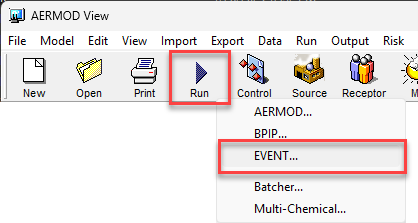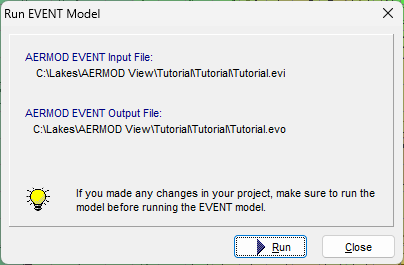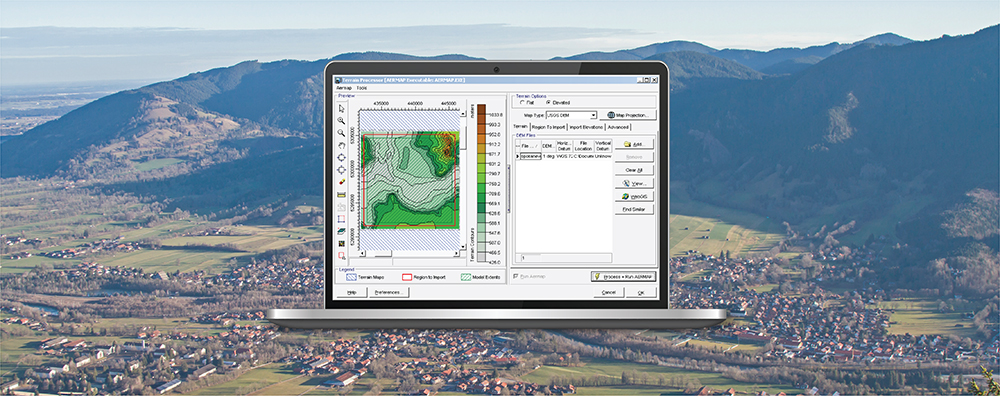When modeling with source groups in the AERMOD air dispersion model, it is not always obvious how much each source contributes to a calculated concentration. To facilitate source contribution analyses, AERMOD contains a routine called the EVENT model which can analyze user-specified events (e.g., design concentrations, threshold violations) and print each source’s contribution to the short-term (i.e., = 24 hours) event.
To start EVENT processing, you must first have AERMOD produce an EVENT processing input file. This is done via the Control Pathway. In AERMOD View, you’ll find this option under the Event/Error Files section.

The EVENT model contains two levels: Detail (DETAIL) and Source Contribution (SOCONT). SOCONT mode displays the average concentration from each source for the period corresponding to the analyzed event. DETAIL mode also includes hourly average concentrations for each source for every hour in the averaging period.
With the EVENT model input file enabled, executing AERMOD will produce a list of events in the specified file. By default, design concentrations (the output options defined in the Receptor Table of the Output Pathway) and any threshold violations identified in the Threshold Violation Files (OU MAXIFILE keyword) are written to the EVENT processing input file.
The image below is an example EVENT processing input file containing high-first-high and high-second-high concentrations for the 3-hour and 24-hour averaging periods in addition to a few threshold violation events.

The next step is to run AERMOD again using the EVENT processing input file. This will initialize the EVENT model run to calculate source contributions. In AERMOD View, this is done via the Run menu.


The EVENT Output File can be opened in any text editor. In AERMOD View, go to the Output menu and select EVENT Output File to view the data.
In addition to the source contribution data, meteorological data conditions are also printed for reference. The example below shows an event corresponding to a threshold violation for a 3-hour average.



